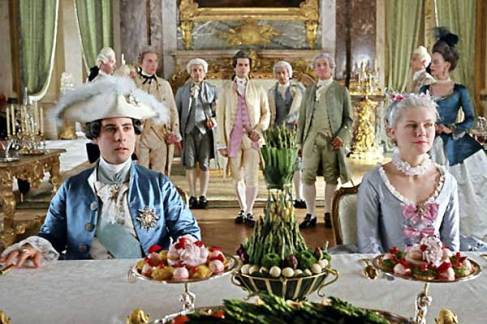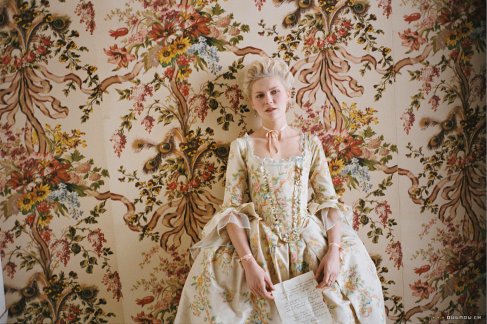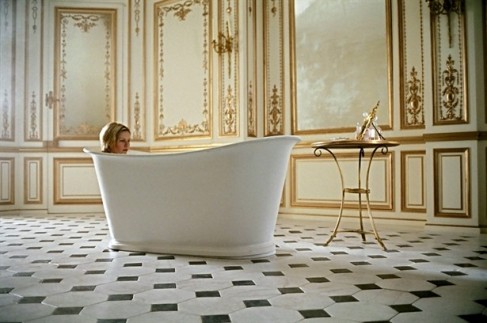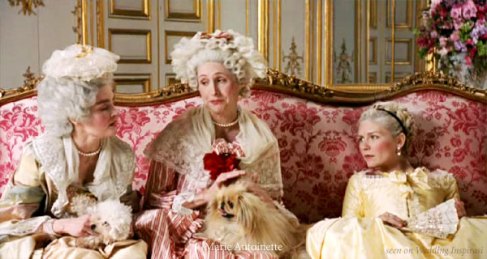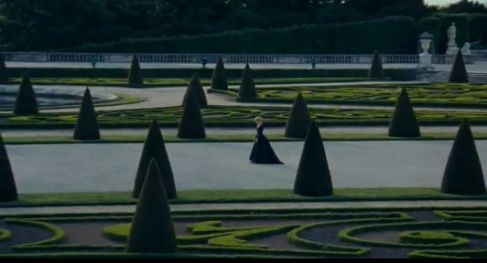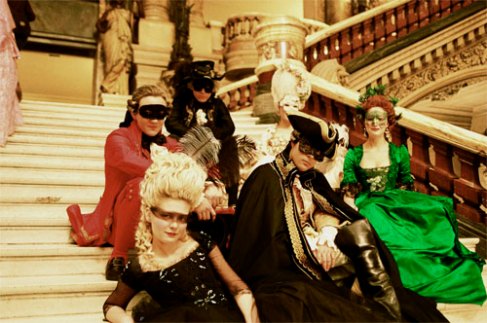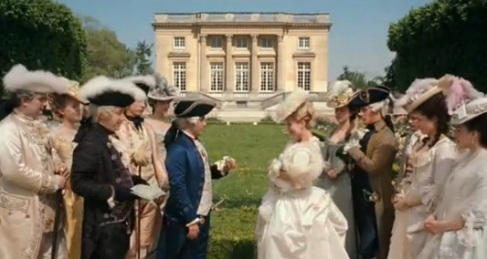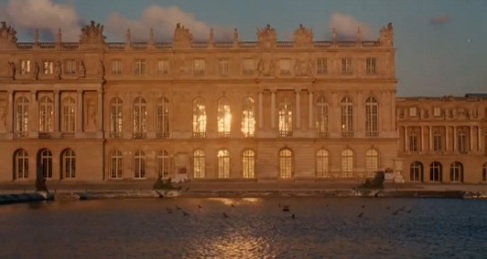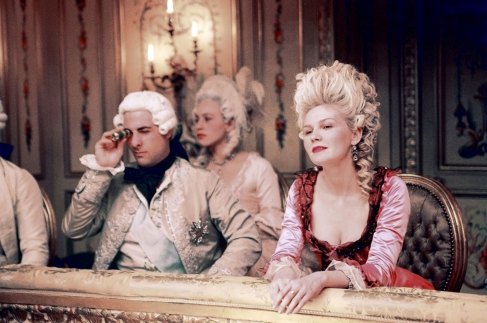Michelle Bacabac
2011-39351
March 12, 2012 11:11 PM
Marie-Antoinette: This is ridiculous.
Comtesse de Noailles: This, Madame, is Versailles.
I have seen posts on the internet about the 2006 film Marie Antoinette by Sofia Coppola but only had the chance to see it last night. I was interested in seeing the film for I have seen two of Coppola’s previous films, The Virgin Suicides and Lost in Translation which was a brilliant film. It was very timely that the film was set in the 18th century and mostly filmed in the Palace of Versailles.
Marie Antoinette is a film loosely based on the life of the controversial Queen of France, Marie Antoinette. Before watching the film, I did some research on Marie Antoinette. The curious thing about her was that despite being crowned Queen of France, she was convicted of treason and sentenced to be guillotined.
It is said that Coppola’s highly stylized interpretation was intentional in order to humanize the historical figures involved. So the film isn’t exactly a documentary and showed a modern treatment and interpretation of Marie Antoinette’s story as well as style. This was also evident in the film’s soundtrack. I think it’s a good thing because it has this attraction to it.
The film tells the story of Marie Antoinette (Kirsten Dunst), the ill-fated Queen of France who was famous for her lavishness, eccentricity and sumptuousness. She indulges in clothes, shoes, cakes and champagne. This extreme spending was her way to make up for her lack of emotional satisfaction. The film retells the tragic story of Marie Antoinette from her betrothal and marriage to Louis XVI at 15 to her reign as queen at 19 and to the end of her reign as queen and ultimately the fall of Versailles.
The palace shown at the beginning of the film after Marie is awakened by a maid drawing open the curtains of her bedroom is neither Hofburg Palace, where she was born, or Schönbrunn Palace, where she was raised, but the Upper Belvedere portion of Belvedere Palace in Vienna, which, although owned by Empress Maria Theresa, was mainly used for social functions.
The French government granted special permission for the crew to film in the Palace of Versailles. The Palace of Versailles, is a royal château in Versailles in the Île-de-France region of France. The Palace of Versailles was the official residence of the Kings of France from 1682 until 1790. It was originally a hunting lodge, built in 1624, by Louis XIII. The film crew had to be extra careful in filming because the place was old and you wouldn’t want to break something. Jules Hardouin-Mansart was the main architect of the palace and particularly the royal stables which are considered to be Mansart’s masterpiece.
The Queen’s bedchamber was one of the largest rooms in the private apartments because protocol required her to give birth in public. During the birth of Louis XVI and Marie Antoinette’s first child, the doctor panicked when 200 courtiers pushed into the room.
The intricate print upholestry set against gold-gilded doors, floral wall coverings and panelled walls dripping with decorative Rococo opulence provide a great backdrop for showing the extravagant life of the teenage queen.
Even though the Hall of Mirrors at the Palace of Versailles was in restoration – until spring 2007 – Sofia Coppola was allowed to film there a ball scene for the wedding of Marie-Antoinette and Louis XVI. The Hall of Mirrors contains 17 large chandeliers and 26 smaller ones each made of solid silver. The chandeliers hold about 1000 candles. Wow! I wonder who lights up all these candles.
Evolving with the château, the gardens of Versailles represent one of the finest extant examples of Garden à la française in French Garden design. The Versailles gardens took 40 years to complete; Louis XIV valued them as much as the palace. That is pretty much a long time to make a garden!
The masquerade ball held in the Paris Opera is clearly seen to take place in the Palais Garnier in Paris, built between 1861 and 1875 during the reign of Napoleon III. This impressive opera house, with its lavishly decorated and easily recognizable grand staircase replaced the old and less sumptuous opera house of Rue le Peletier.
Scenes of Marie at the Petit Trianon, a château located on the grounds of the Palace of Versailles. The Queen would go there to escape from the formality of court life.
While the action happens in Versailles (including the Queen’s Petit Trianon and the Hameau de la reine) and the Paris Opera (which was built after the death of the real Marie Antoinette), some scenes were also shot in Vaux-le-Vicomte, Château de Chantilly, Hôtel de Soubise and at the Belvedere in Vienna. Filiming locations also include vast gardens with beautifully-manicured topiary and lawns.
The style of Marie Antoinette’s time is called Rococo and it was a style popular with the elite who indulged in their extravagant lifestyle while the regular people were starving. The style was very much associated with the repression the people experienced and the whole episode in French history which led to the French Revolution and the demise of the French royal family, including, of course, Marie Antoinette.
I’m glad I watched this film. Although the film was a bit slow-moving, the visuals were absolutely gorgeous. You will love the pretty pastel palette of soft pinks, light yellows, gentle peaches and baby blues. It was very aesthetically pleasing with all the gorgeous costumes, delicious confections and elaborate interiors. The Palace of Versailles is an amazing and beautiful place. I was really enchanted by the aesthetic looks of its interiors especially the intricate patterns on the walls. The architecture and interior design definitely helped set the atmosphere of the film.
References:
- http://en.wikipedia.org/wiki/Marie_Antoinette_(2006_film)
- http://www.imdb.com/title/tt0422720/
- http://www.weddinginspirasi.com/2009/09/21/wedding-dress-inspiration-marie-antoinette-part-1costumes/
- http://dutchbritishlove.wordpress.com/2010/09/21/lovely-monday-marie-antoinette/
- http://www.funtrivia.com/en/subtopics/The-Palace-of-Versailles-2809.html
- http://travel.nationalgeographic.com/travel/world-heritage/versailles/
- http://www.castles.org/castles/Europe/Western_Europe/France/france6.htm
Photos:
- http://tinkawelt.files.wordpress.com/2008/08/roses10.jpg
- http://tvmoviesimages.blogspot.com/2011/05/kirsten-dunst-as-marie-antoinette.html
- http://my-little-nook.blogspot.com/2011/06/inspired-by-marie-antoinette-movie.html
- http://www.thefancarpet.com/uploaded_assets/images/gallery/2338/Marie_Antoinette_33518_Medium.jpg
- http://www.sandsfilms.co.uk/marie-antoinette-2.jpg
- http://madameguillotine.files.wordpress.com/2012/02/wedding15.jpeg?w=500&h=331
- Other photos were print screened from the movie





